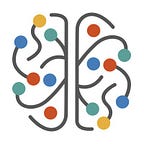3 Reasons Why OpenAI’s Deepfake News is Important
Just when you thought the AI speech and text space couldn’t get more exciting — last week things went mainstream last week with OpenAI’s latest research “GPT-2”. We dug into the paper and demos and wrote up a plain-English summary, along with 3 reasons why we think it’s particularly big news.
But don’t take our word for it — ask experts from the CognitionX AI Advice Network! Each of our news article pages now also makes it easy to ask questions about the news topic. See this screen shot below:
Also in this issue of Speaking Naturally:
- 🤵Virtual boyfriends: a digital being you may not be aware of
- 👱🏾♀️AI algorithmic fairness and bias
- 📊2019 chatbot stats and trends
- 📡Machine Teaching: a new frontier in education
- 😍Insights into emojis for feedback
Leading the Pack
Multi-talented AI for creative writing & comprehension
Computer software has not historically been very good at creative writing. It often suffers from problems like forgetting what it is writing about midway through a paragraph, or mangling the syntax of long sentences. Not anymore. OpenAI (the research company backed by Elon Musk) have created an AI system called GPT-2, dubbed the “deepfakes for text” as it is so good at writing plausible passages that match what it is given in both style and subject (from news stories to works of fiction).
We’ve evaluated demo and read through the research paper, and highlight two other key reasons why OpenAI GPT-2 is hugely important aside from fluidity of creative writing
Read more
Digital beings: what Virtual Boyfriends look like today
Decent romance bots perform only specific functions, such as Microsoft’s Ruuh, which can send you loving messages throughout the day and supports some chit-chat; Dancing Miki, a 3D date who will dance around and change outfits on command; and the “Honey, It’s Me!” app, popular in Korea, which features girlfriends you can schedule one-sided robo-calls with.
Read more to learn about this growth industry.
Under the Hood
What’s the secret behind DeepFakes for Text?
GPT-2 is a large transformer-based language model with 1.5 billion parameters, trained on a dataset of 8 million web pages. Most remarkably it learns from raw text. It was trained to predict the next word in 40GB of raw, unlabelled, Internet text and outperforms other language models in specific domains (like question answering, reading comprehension, summarisation, and translation) without needing to use these labelled, domain-specific training sets.
The trained model is not released however, a smaller model is available for researchers to experiment with (along with a technical paper).
Read more
Old Problems, New Solutions
AI algorithmic fairness and bias
In CognitionX’s own NLP research we’ve been assessing gender and racial bias. It’s present in most systems today, some more than others. This article is an update on how Microsoft is approaching the problem.
Read more
Using AI for communication and storytelling
Asking each other basic questions demonstrates a social process of learning. This is because questions demonstrate more than one thing: they show the transfer of learning, emotion, an understanding of context, prior knowledge from storytelling, etc. Michelle Zimmerman explores how AI can facilitate communication and storytelling, and thus, learning.
Read more
CognitionX Research
Chatbots in Telecommunications: Business Case Studies (NEW REPORT)
If you’re a senior leader in the telecommunications sector, curious about the potential of a conversational AI strategy, CognitionX’s latest report on chatbot case studies for telcos is designed to help accelerate your ability to create strategies with confidence.
The questions the report explores:
- What does good look like for chatbots in the telecommunications sector?
- What are some examples of successful case studies?
- What do they cost and return-on-investment windows?
- + many others
£195+VAT for one license, £995+VAT for 10 licenses of this report
Register Interest: Chatbots in Telcos
Numbers that Matter
2019: Chatbot Stats and Trends
Where chatbots are performing well? One of the popular use cases of chatbots today is in lead-generation. Chatbots have been very useful in the travel industry for answering and filtering travel bookings. The education industry saw more wide applications (from getting students to engage in online courses to communicating with parents who are interested in admitting their children to an institution). Health professionals and clinics are able to efficiently manage their bookings with the aid of the conversational interfaces. Finally, financial institutions adopting chatbots for pre-assessment and consultation with their prospects.
Read more to find out which countries are most engaged with chatbots and predictions for the next five year.
Smarter Conversations
Why Intercom changed their emojis
Measuring the quality of your interactions with your customers is important. One creative method used by Intercom was to use an emoji scale — 😠 🙁 😐 😃 😍 — representing a five-star scale from “Terrible” to “Amazing”. Learn more about what they changed and why.
Read more
